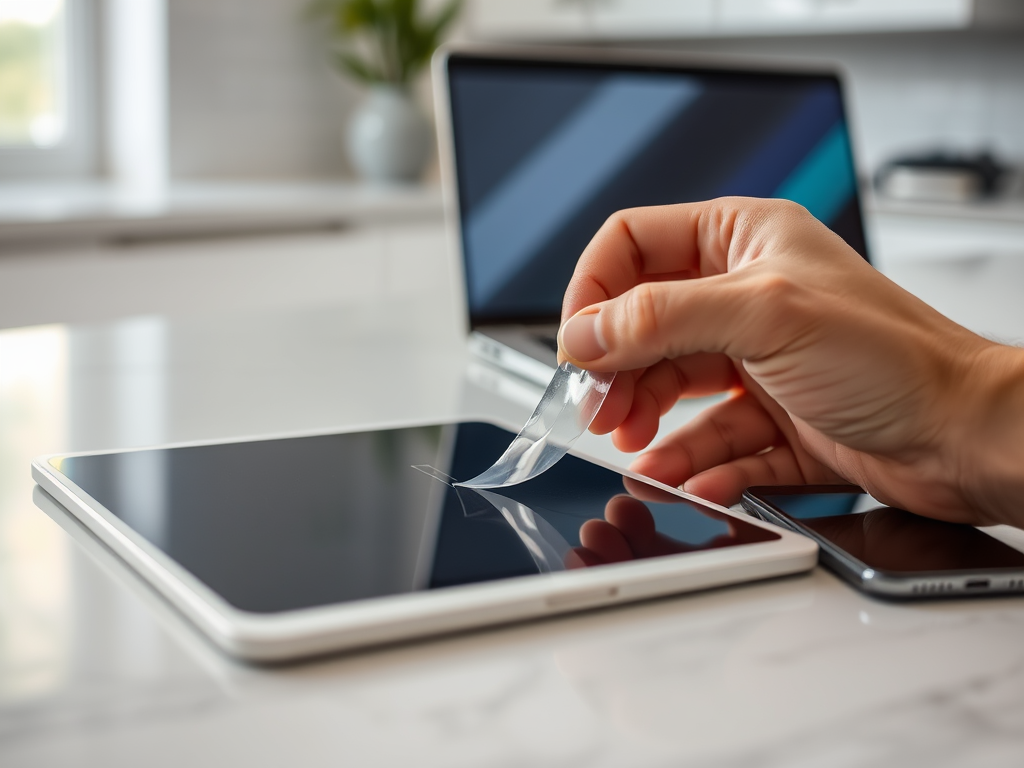In a world where our tablets are our gateways to entertainment, communication, and productivity, a cracked screen can feel like a major setback. Whether it’s a small hairline crack or a more pronounced shatter, every user must deal with the inevitable “What do I do now?” moment. While professional repair services are often necessary to restore a device to its original state, there are temporary solutions that can help you navigate the situation until you can get proper assistance. Not only do these fixes provide a way to continue using your device, but they also prevent additional damage and keep the device in a manageable condition. Here, we’ll explore various strategies, from simple protective measures to DIY fixes, to help you prolong the life of your tablet screen.
Before you start applying any fixes, it’s important to evaluate the severity of the crack. Ignoring the damage could lead to further complications, impacting the device’s functionality. Hence, understanding the specifics of the crack can inform the best interim solutions. The following sections will guide you through temporary fixes that can serve as stopgap measures while you plan for a professional repair.
Understanding the Severity of the Crack

The first step in addressing a cracked tablet screen is to identify the type of crack you’re dealing with. Cracks can range from minor to severe, which greatly influences how you should proceed. Assessing the crack can save you from unnecessary future hassles. Professionals often categorize cracks in a few different ways, which can make it easier for you to decide on a temporary fix. Here are the most common types of cracks:
- Hairline Cracks: Minor surface blemishes that usually don’t affect functionality.
- Deep Cracks: These may impact touch sensitivity, making the device less responsive.
- Shattered Screens: Extensive damage that may hinder complete functionality; often requires immediate professional attention.
Immediate Steps to Take

When you first notice a crack on your tablet, it is crucial to act swiftly. Taking immediate steps can help mitigate further issues and protect your device from additional damage. This is where management of the situation plays a key role. Here are critical initial actions to embrace:
- Remove the Case: If your tablet is in a case, remove it immediately to relieve pressure on the cracked screen.
- Power Off the Device: Turn your tablet off to prevent touchscreen issues and further internal damage.
- Avoid Moisture: Keep your device dry as moisture can worsen the cracks and potentially harm internal components.
Temporary Solutions for Protection
With the immediate steps in place, you can now focus on temporary fixes to manage the crack. These solutions will help maintain your tablet’s usability while you plan for a more permanent repair. Below are several practical methods you can try at home:
| Temporary Fix | Description | Benefits |
|---|---|---|
| Clear Tape | Apply a piece of clear tape over the crack. | Helps keep the glass intact and prevents further damage. |
| Screen Protector | Use a tempered glass or plastic screen protector. | Provides an extra layer of defense against dirt and impacts. |
| DIY Glue Fix | Apply clear adhesive to fill the crack. | Holds the glass together temporarily. |
Each of these temporary fixes serves as a precautionary measure. For instance, applying clear tape is one of the simplest ways to minimize risks associated with cracked screens. Just ensure that you clean the surface gently beforehand to avoid trapping dirt or debris, which could worsen the crack. Screen protectors not only help shield the crack but can enhance touch sensitivity, allowing you to use the tablet with more confidence. Similarly, the DIY glue method provides cosmetic sorting until you can head to a repair shop.
Keeping Your Device Safe
While the solutions above can help you manage your cracked screen, implementing proper handling and storage techniques is equally critical. Preventing future incidents is a proactive approach that every tablet owner should adopt. Here are a few recommended practices:
- Use a Protective Case: Invest in a robust case that can absorb impacts, reducing the likelihood of further cracks.
- Avoid Tight Spaces: Store your tablet away from tight cabinets or bags where it can be crushed or impacted.
- Handle with Care: Always be mindful when transporting your device; avoid risky situations like sitting on it while it’s in your pocket.
Conclusion
Cracked tablet screens can pose a frustrating challenge, but the effective temporary fixes discussed here can ease your predicament. By understanding the severity of your crack and employing straightforward protective measures, you can continue using your tablet with minimal disruption. Nevertheless, it’s crucial to emphasize that these solutions are just temporary and should not replace professional repairs. Make it a priority to address the crack promptly to maintain the functionality and lifespan of your device.
Frequently Asked Questions
- Can I still use my tablet with a cracked screen? Yes, but it may affect functionality and could worsen if not addressed.
- How long can I wait to get my tablet repaired? It’s best to seek repairs as soon as possible to prevent further damage.
- Will tape damage my tablet screen? Using clear tape should not damage the screen, but it’s essential to apply it carefully to avoid residue.
- Is it safe to use super glue on my screen? While some people use super glue as a temporary fix, it’s not recommended as it can cause further damage if applied improperly.
- Do I need to worry about shards of glass? Yes, shards can be sharp and pose a risk. It’s important to handle the device with care and consider applying a temporary fix to minimize contact.



